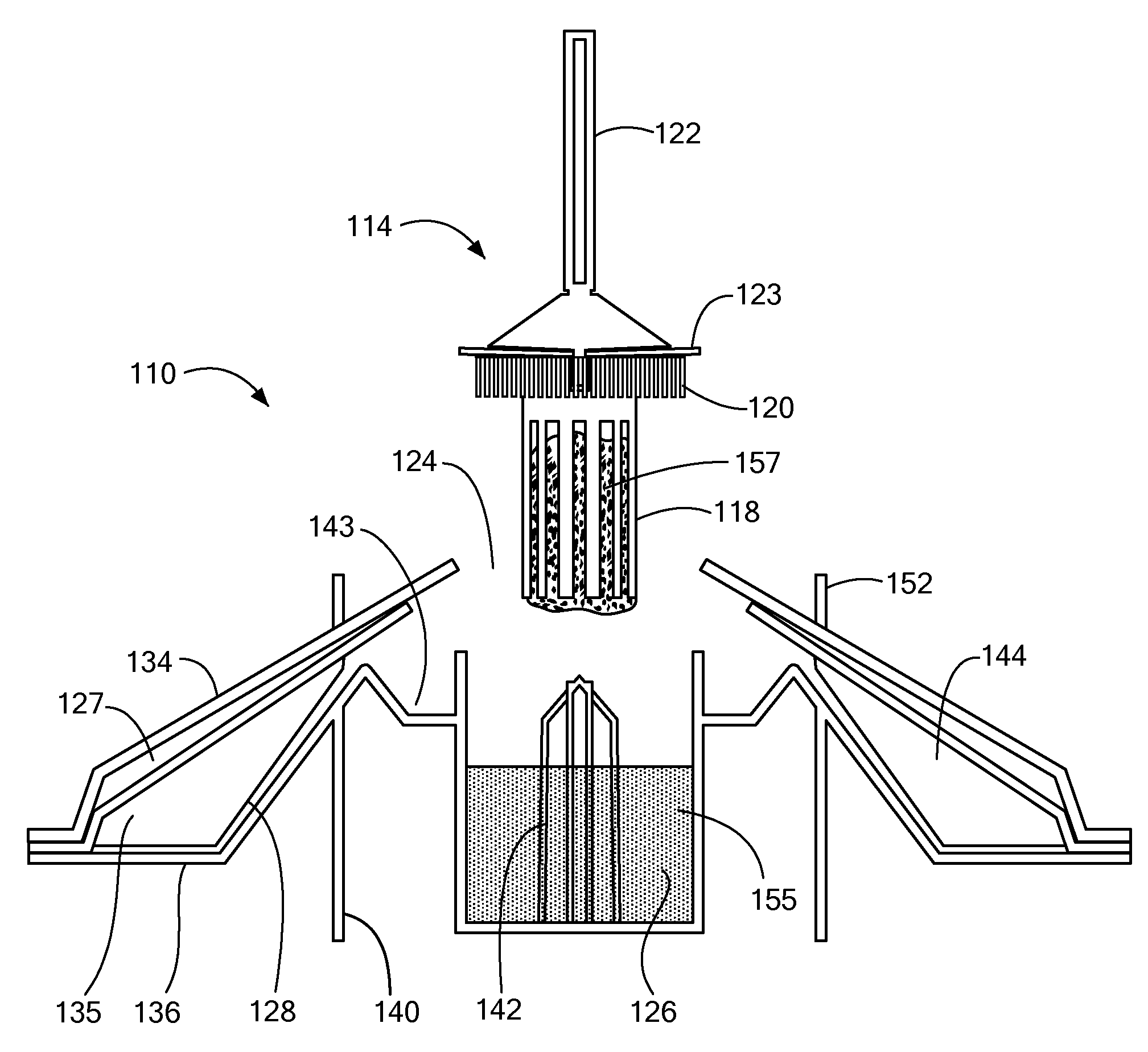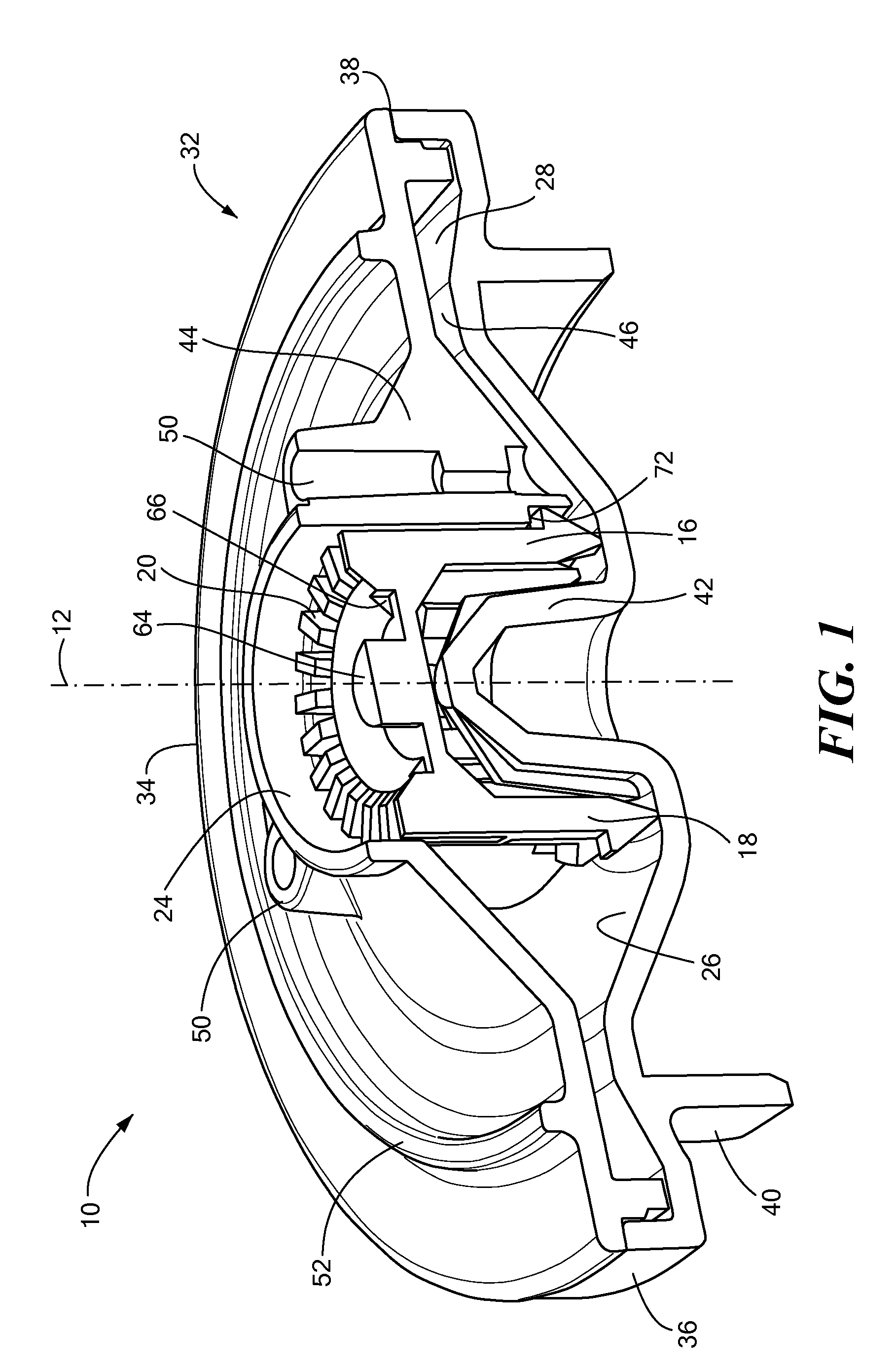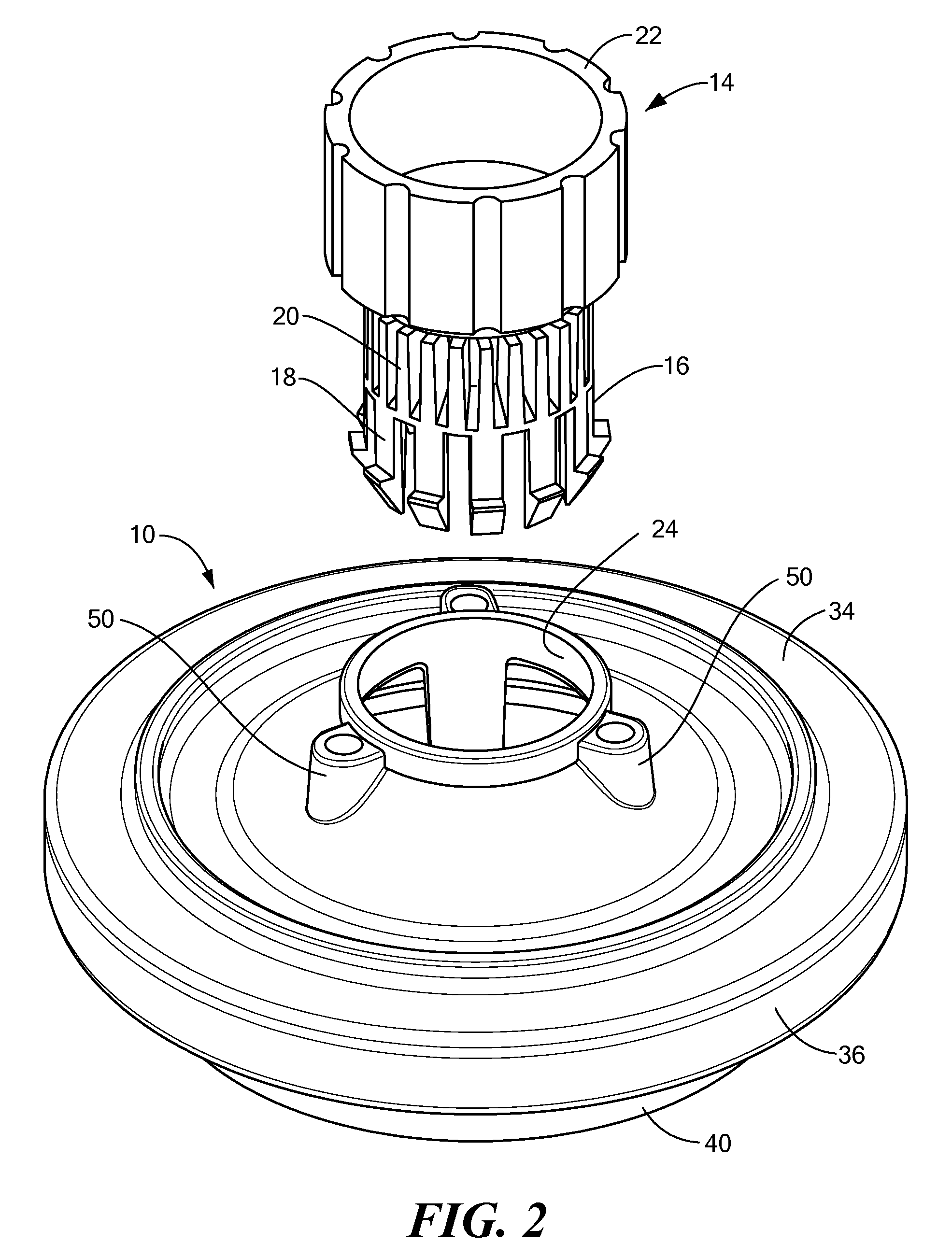Centrifugal device and method for ova detection
a centrifugal device and ova technology, applied in the field of centrifugal device and method for ova detection, can solve the problems of low parasite population, inability to detect, difficult direct examination, etc., and achieve the effect of simple, rapid and highly accura
- Summary
- Abstract
- Description
- Claims
- Application Information
AI Technical Summary
Benefits of technology
Problems solved by technology
Method used
Image
Examples
Embodiment Construction
[0064]The disclosures of PCT International Application No. US2007 / 019639, filed Sep. 10, 2007, and U.S. Provisional Patent Application No. 60 / 843,347, filed Sep. 8, 2006, U.S. Provisional Patent Application No. 60 / 843,176, filed Sep. 8, 2006, and U.S. Provisional Patent Application No. 60 / 861,993, filed Nov. 30, 2006, are incorporated by reference herein.
[0065]A first embodiment of a centrifugal device is illustrated in FIGS. 1-10. The device includes a rotor assembly 10 for rotation about its central axis 12 in a centrifuge (not shown) and a coring assembly 14. The coring assembly includes a lower portion 16 having a coring element 18 and optionally a filter element 20, and a removable upper portion or handle 22. The coring assembly is used to retrieve a fecal sample and insert it into the rotor assembly through an opening 24 in the top. The rotor assembly includes a mixing or receiving chamber 26, in which the fecal sample is initially mixed with a flotation fluid, and a sediment ...
PUM
 Login to View More
Login to View More Abstract
Description
Claims
Application Information
 Login to View More
Login to View More - R&D
- Intellectual Property
- Life Sciences
- Materials
- Tech Scout
- Unparalleled Data Quality
- Higher Quality Content
- 60% Fewer Hallucinations
Browse by: Latest US Patents, China's latest patents, Technical Efficacy Thesaurus, Application Domain, Technology Topic, Popular Technical Reports.
© 2025 PatSnap. All rights reserved.Legal|Privacy policy|Modern Slavery Act Transparency Statement|Sitemap|About US| Contact US: help@patsnap.com



